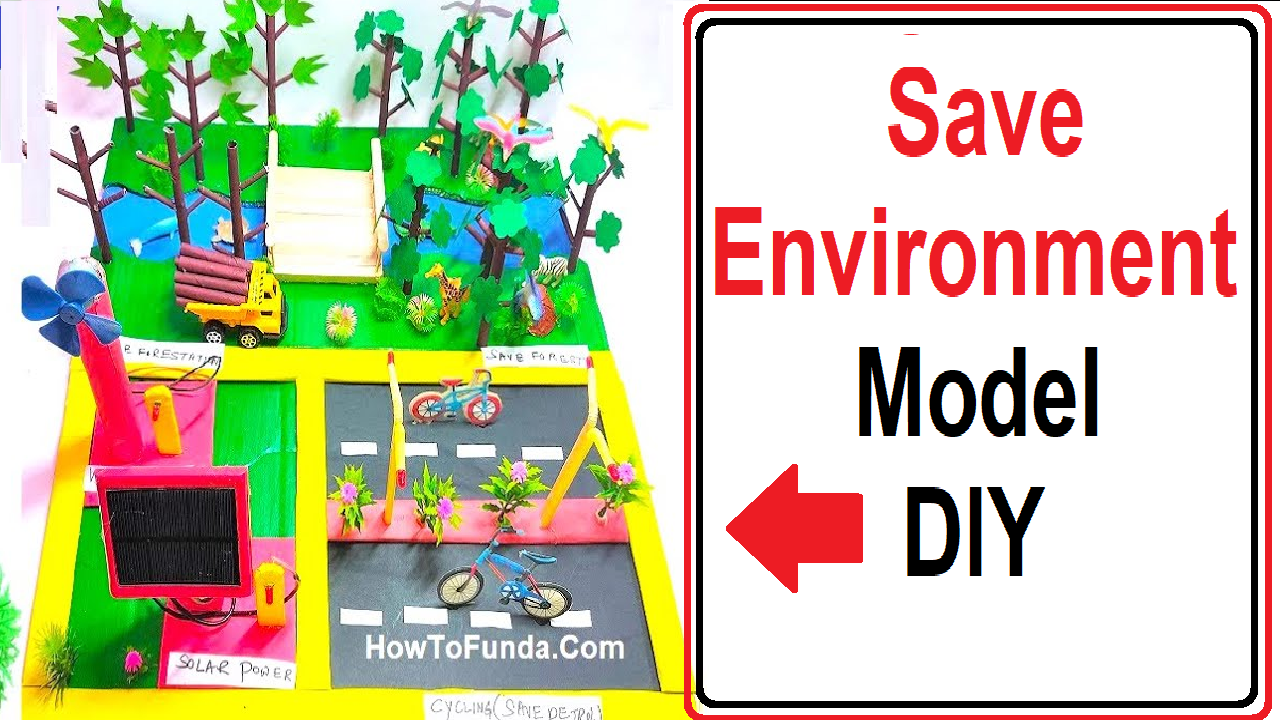Here are 20 environment-related science project ideas suitable for school projects. These ideas span various topics, including pollution, conservation, climate change, and ecosystem health:

1. Air Quality Monitoring
- Objective: Measure and compare air quality in different locations.
- Description: Use air quality sensors to monitor pollutants like particulate matter, CO2, and ozone in various areas (e.g., urban vs. rural). Analyze the data and discuss possible sources of pollution.
2. Effects of Acid Rain on Plants
- Objective: Investigate how acid rain affects plant growth.
- Description: Simulate acid rain by adjusting the pH of water and apply it to different plants. Observe and document changes in growth and health.
3. Water Purification Methods
- Objective: Compare the effectiveness of different water purification methods.
- Description: Test methods like boiling, filtration, chlorination, and UV light on contaminated water samples and measure the reduction in pollutants.
4. Impact of Plastic Pollution on Marine Life
- Objective: Study the effects of plastic pollution on aquatic organisms.
- Description: Expose small aquatic organisms to microplastics and observe any changes in their health, behavior, and growth.
5. Soil Erosion Prevention
- Objective: Test different methods for preventing soil erosion.
- Description: Create a small-scale model of a hillside and apply various erosion control methods (e.g., planting vegetation, using mulch) to observe their effectiveness.
6. Renewable Energy Sources
- Objective: Compare the efficiency of different renewable energy sources.
- Description: Build small models of solar panels, wind turbines, and hydroelectric generators. Measure their energy output under controlled conditions.
7. Composting Organic Waste
- Objective: Investigate the benefits of composting organic waste.
- Description: Set up compost bins with different types of organic waste and monitor the decomposition process. Measure the nutrient content of the resulting compost.
8. Greenhouse Gas Emissions from Common Activities
- Objective: Calculate the greenhouse gas emissions from various daily activities.
- Description: Research and estimate the emissions from activities like driving, using electricity, and food consumption. Propose ways to reduce these emissions.
9. Impact of Deforestation
- Objective: Study the effects of deforestation on local ecosystems.
- Description: Create a model to simulate deforestation and its impact on soil, water, and biodiversity. Compare with an intact forest model.
10. Water Conservation Techniques
- Objective: Evaluate different water conservation techniques.
- Description: Implement techniques like drip irrigation, rainwater harvesting, and mulching in a garden setting and measure their effectiveness in reducing water use.
11. Biodiversity in Local Areas
- Objective: Assess the biodiversity in different local habitats.
- Description: Conduct surveys of plant and animal species in various locations (e.g., park, schoolyard, forest) and compare biodiversity levels.
12. Recycling Program Effectiveness
- Objective: Evaluate the effectiveness of a recycling program.
- Description: Analyze the amount and type of materials collected in a recycling program at school or in the community and measure the reduction in waste.
13. Impact of Noise Pollution
- Objective: Study the effects of noise pollution on human health and behavior.
- Description: Measure noise levels in different environments and survey individuals about their health and stress levels. Analyze correlations.
14. Solar Water Heater
- Objective: Build and test a solar water heater.
- Description: Design and construct a solar water heating system, then measure its efficiency in heating water compared to conventional methods.
15. Climate Change Awareness Campaign
- Objective: Raise awareness about climate change and its effects.
- Description: Develop and implement a campaign (posters, presentations, social media) to educate peers about climate change. Measure changes in awareness and attitudes.
16. Effects of Pesticides on Non-Target Organisms
- Objective: Investigate the impact of pesticides on non-target organisms.
- Description: Expose insects or plants to different pesticide concentrations and observe any adverse effects on their health and behavior.
17. Aquaponics System
- Objective: Build an aquaponics system to grow plants and fish sustainably.
- Description: Design and set up an aquaponics system, then monitor the growth of plants and health of fish. Compare with traditional growing methods.
18. Impact of Urbanization on Local Wildlife
- Objective: Study how urbanization affects local wildlife populations.
- Description: Survey wildlife presence and behavior in urban, suburban, and rural areas. Analyze the data to determine the impact of urban development.
19. Natural vs. Chemical Fertilizers
- Objective: Compare the effects of natural and chemical fertilizers on plant growth.
- Description: Grow plants using different types of fertilizers and measure growth rates, health, and soil quality.
20. Microclimate Creation
- Objective: Create and study a microclimate.
- Description: Design a small greenhouse or use terrariums to create different microclimates. Monitor temperature, humidity, and plant growth in each microclimate.
These projects provide a range of opportunities for students to engage with environmental issues and develop practical solutions to promote sustainability.

